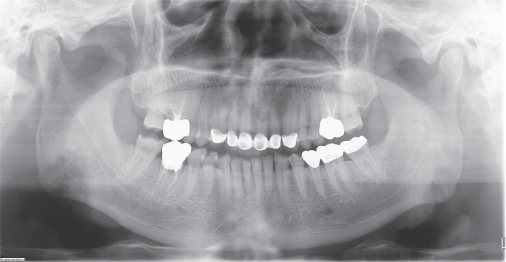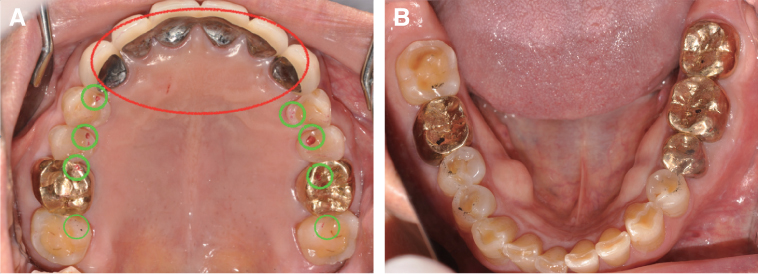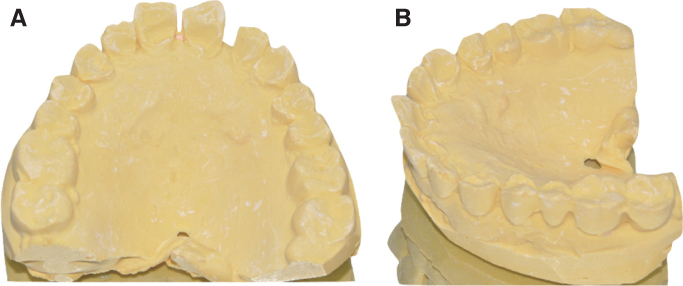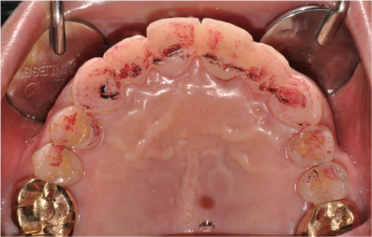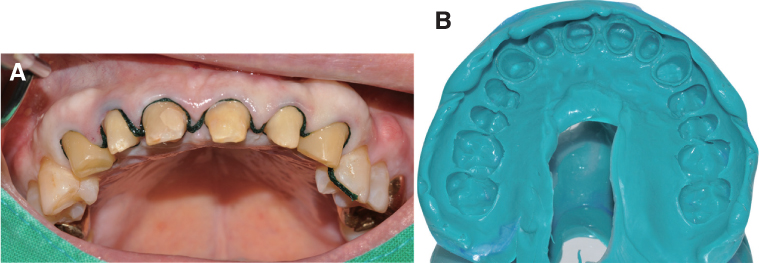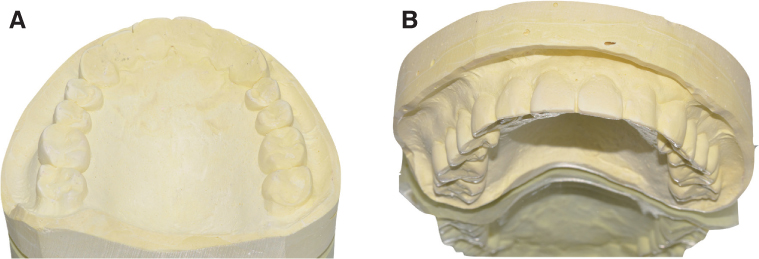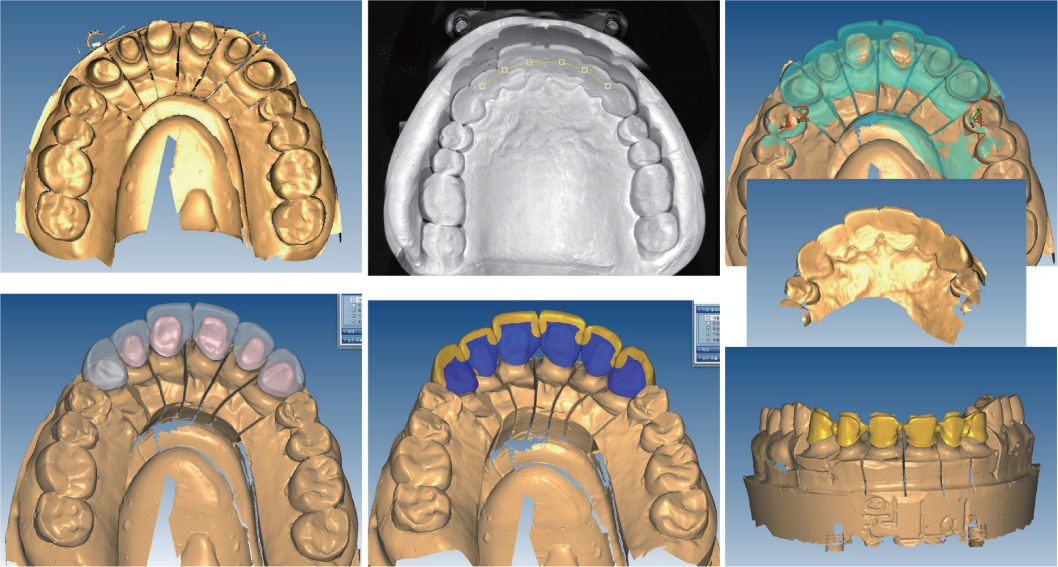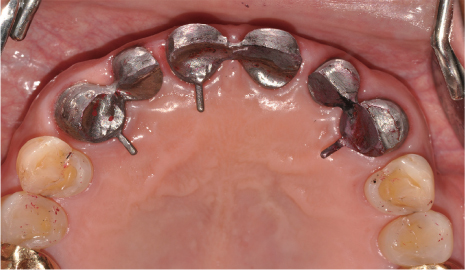J Korean Acad Prosthodont.
2019 Oct;57(4):467-474. 10.4047/jkap.2019.57.4.467.
Maxillary anterior prosthetic treatment concerning anterior guidance of a patient who lost stable holding contact
- Affiliations
-
- 1Department of Prosthodontics, School of Dentistry, Kyungpook National University, Daegu, Republic of Korea. prosth95@knu.ac.kr
- KMID: 2461155
- DOI: http://doi.org/10.4047/jkap.2019.57.4.467
Abstract
- Recently, many patients undergo anterior prosthetic treatment for esthetic reasons. In some patients complain about functional reasons such as inaccurate pronunciation and occlusal discomfort after the treatment. Anterior teeth are important esthetically but in the occlusal point of view, anterior guidance is the second most important factor in occlusion, next to centric relation. Failure to determine an appropriate anterior guidance might lead to posterior occlusal interference, which can highly affect the stability of the posterior teeth. Also, discomfort might occur if the customized interior guidance is not in harmony with the patient's envelope of function. The patient in this case complained of overall discomfort in the maxillary anterior area after prosthetic treatment. The expressed difficulty in pronunciation, unstable occlusion due to lack of stable holding contact and discomfort of the facial muscles. Maxillary anterior prostheses were refabricated through systematic diagnosis and treatment and thus, this case presents esthetical and functional satisfaction to both the patient and the dentist.
Figure
Reference
-
1. Palmer JM. Analysis of speech in prosthodontic practice. J Prosthet Dent. 1974; 31:605–614.
Article2. Choi YS, Lee SM. Prosthetic restoration of the patient with inaccurate pronunciation after prosthesis fabrication through systematic diagnosis and treatment procedure: A case report. J Korean Acad Prosthodont. 2016; 54:413–422.
Article3. Dawson PE. Evaluation, diagnosis and treatment of occlusal problems. 2nd ed. St. Louis: MO: Mosby;1989.4. Cranham JC. Anterior guidance: Myth or mandatory? Inside Dent. 2015; 11:94–101.5. Kerstein RB, Wright NR. Electromyographic and computer analyses of patients suffering from chronic myofascial pain-dysfunction syndrome: Before and after treatment with immediate complete anterior guidance development. J Prosthet Dent. 1991; 66:677–686.
Article6. Bakeman EM, Kois J. The myth of anterior guidance. J Cosmetic Dent. 2012; 28:56–62.7. Peck FH, Rickert D. Treating the constricted envelope of function. Inside Dental Tech. 2017; 8:36–41.8. Ergun G, Bozkaya E. Full-mouth rehabilitation of Class II deep-bite patient: A 5-year clinical report. Eur J Dent. 2016; 10:426–431.
Article9. Jacobs R, van Steenberghe D. Role of periodontal ligament receptors in the tactile function of teeth: a review. J Periodontal Res. 1994; 29:153–167.
Article10. Ash MM, Ramfjord SP. Occlusion. 4th ed. Philadelphia: WB Saunders;1995.11. Nemcovsky CE, Gross MD. Transferring provisional restorations to final master casts. J Oral Rehabil. 1994; 21:157–163.
Article
- Full Text Links
- Actions
-
Cited
- CITED
-
- Close
- Share
- Similar articles
-
- Usage of digital technique to facilitate communication between dentist, dental lab technician, and patients in diagnosis and restoration for maxillary anterior implant: a case report
- Periodontal and prosthetic treatment of maxillary incisors with pathological tooth migration: a case report with 10-year follow-up
- New anterior guidance induction through spontaneous gap closure after an increase in vertical dimension: a case report
- Full mouth rehabilitation on the patient with maxillary anterior diastema and posterior bite collapse with orthodontic treatment
- Maxillary anterior implant restoration with appropriate anterior guidance using T-Scan in a patient with full fixed prostheses

